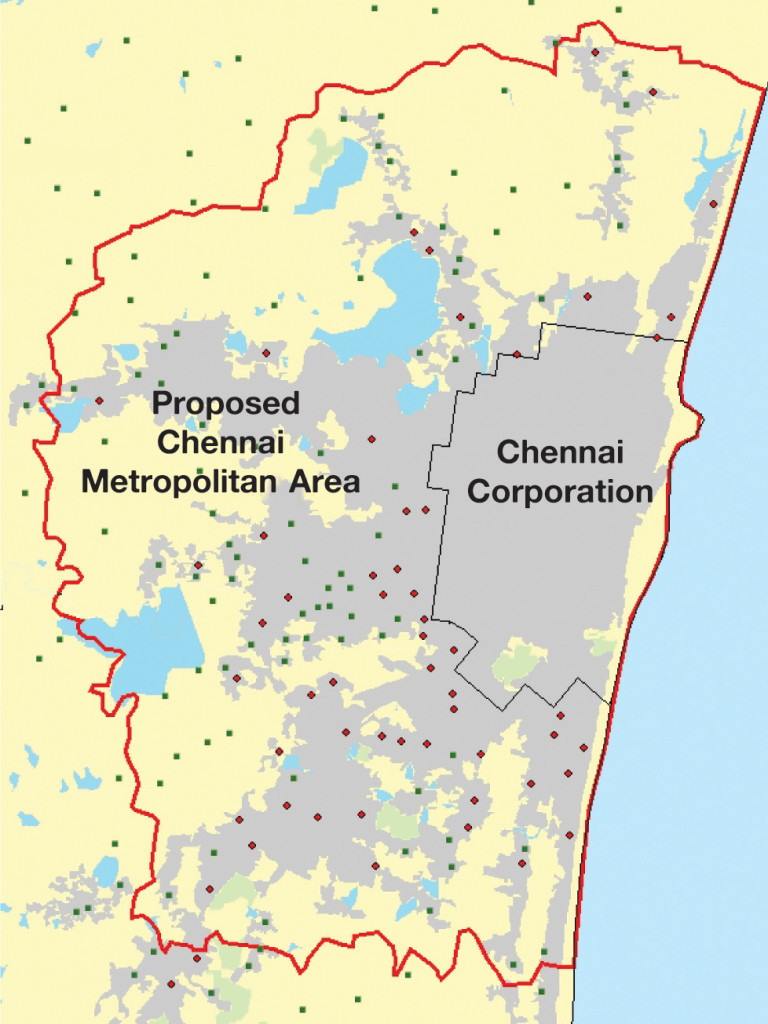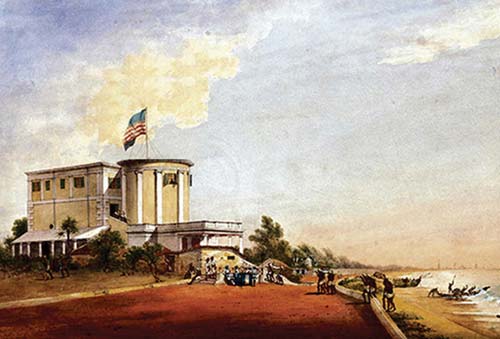Registered with the Registrar of Newspapers for India under R.N.I 53640/91
Vol. XXVIII No. 3, May 16-31, 2018
Archives: Vol. XXVIII No. 3, May 16-31, 2018
Yet another memorial on the Marina
By The Editor
The State Government has announced plans to build on the Marina a memorial for former Chief Minister J. Jayalalithaa. There are muted debates about whether a personality convicted in a corruption case deserves a memorial on the beach. We leave that aspect to others to discuss, while we record our discomfort with honouring people who have a proven record of misuse of public office. But what we are completely against is the conversion of the beach into a series of memorials for departed leaders.
The trend is of course not new. While Annadurai’s may have been the first grandiose memorial on the beach, it has been a practice to erect statues on the beachfront at least since 1912, when V. Krishnaswami Aiyar’s was the first to be put up outside the Senate House. The 1968 Tamil Conference added those of many scholars who have contributed to the language but it must be admitted that most of these statues are of doubtful artistic merit. The creation of a memorial to Anna was above controversy largely because of that leader’s charisma and it was built at a time when space was aplenty and there was not much concern for the environment. The memorial to MGR did not pass by so smoothly as there were many who criticised its location and subsequent design. They could not have then foreseen that it would one day be remodelled on what can only be termed as classical with strange additions including something that looks like an upturned version of his party symbol topped by a golden prancing horse. The same makeover bestowed on the Anna Memorial something that looked like a miniature Arc de Triomphe. The proposed memorial for Jayalalithaa too is as Tamil as the above – the monument will have a phoenix flanked by lions!
All over the city, we have several memorials to departed leaders, none of which are in any way attractive to the average tourist or the local population. In Guindy we have monuments to Gandhi, Rajaji, Kamaraj, Bhaktavatsalam, Rettai Malai Srinivasan and to the Unknown Freedom Fighter. There is an Ambedkar Memorial on Greenway’s Road, desolate for much of the year. Sivaji Ganesan has one on the same road, close to the Adyar River. There is one to Moopanar on G.N. Chetty Road. Add to this houses of leaders Kamaraj and MGR and you get the picture of many memorials with very little in them to attract anyone. Not one of these can be put to any practical use as venues for conferences, school events or exhibitions. And then there are countless statues cluttering various street corners, parks and other public spaces. Most of these are denied even the most cursory maintenance. Some need to be caged for their protection.
The trend of building memorials on the Marina is most detrimental to the city. If more and more of these are to come up with time, and there is no reason why others will not demand such markers for themselves or their leaders as and when they pass on, the beach will become a series of monuments, with hardly any space left for public recreation.
In a city that is becoming increasingly congested, choking off such lungs with useless buildings is something that cannot be encouraged. Given this, it is quite amazing that the CMDA and the National Green Tribunal, never the fastest of bodies when it comes to giving their okay, approved the proposed memorial with alacrity.
There is also the cost of the proposed memorial – Rs 50 crore – to be considered. With succeeding budgets painting an alarming picture of the State’s economy, where is this money to come from? It cannot be assumed that the late leader’s party is paying for it.
7-fold expansion not an option
By A Special Correspondent

At present, the Chennai Metropolitan Area is 1,189 sq.km after its notification in 1975. CMDA intends to expand it to 8,878 sq.km engulfing Tiruvallur and Kancheepuram Districts and Arakkonam and Nemili Taluks in Vellore District, Chengalpattu becoming part of the region. The objective is to anticipate the needs of the population by 2026.
Enlargement of the City region, and that too, by over seven times seems highly complex and over ambitious. Reservations on some issues cannot be helped. Have similar objectives, as were spelt out, been achieved for the first expansion to 1189 sq.km? If the answer is in the negative, how is an enlarged area a substitute for sound conception and implementation? If the answer is in the affirmative, would it not be realistic to break the proposed massive expansion into manageable modules, of the same size as for the first expansion, without weakening their organic inter-relationships? Has an expert study been done to assess what needs to be done to result in a positive impact on decongestion, reduced pollution and improved quality of life?
When the area was expanded to 1,189 sq.km, Government reasoned that a large area was needed to find the best possible location for employment, affordable housing and relocation of slums and developing connectivity. This was primarily to be achieved by creating satellite towns and peripheral ring roads.
How much can we do?
by Shobha Menon
 A mid-January dawn in Chennai of UNESCO ‘heritage fame’, as margazhi kolams inch boisterously onto the centre of roads, roadside temples belt out loud religious music to the neighbourhoods. It is the run up to auspicious Thai and the bounteous Pongal festival. Only, the air of peaceful holiness is marred by the overflowing garbage bins everywhere around. Stranger still is that morning walkers, senior citizens, fitness enthusiasts etc., move around effortlessly, unseeing of the muck in every periphery of their vision!
A mid-January dawn in Chennai of UNESCO ‘heritage fame’, as margazhi kolams inch boisterously onto the centre of roads, roadside temples belt out loud religious music to the neighbourhoods. It is the run up to auspicious Thai and the bounteous Pongal festival. Only, the air of peaceful holiness is marred by the overflowing garbage bins everywhere around. Stranger still is that morning walkers, senior citizens, fitness enthusiasts etc., move around effortlessly, unseeing of the muck in every periphery of their vision!
Interviewing conservancy workers whose job profile is to keep the streets of Chennai clean and free of garbage and litter (while coming from the most underprivileged neighbourhoods of the city) was revealing. Some excerpts:
7 am, Ellaiamman Koil Street, Kotturpuram: 36 year old Kumar, has been six years in this work. Earlier a casual labourer, he leaves his home at 4 am to sign in by 6 am.
“As years go by, it is just more and more garbage!
Lost Landmarks of Chennai
- Sriram V
The ice makers we once had – 1
India’s ice-making pioneer: Roebuck

Ice House – in its earliest days when the Tudors occupied it.
In the hot coastal region that is the Coromandel Coast, naturally frozen water is unthinkable. Commercial production of ice too was unheard of till the 1800s. But once it became feasible, there was no stopping demand for the commodity in Madras. In their heyday, which was till the 1960s or thereabouts, when domestic refrigeration became popular, there were several factories in the city that produced ice. None of these have survived, but ice production continues, and is a thriving trade, though hardly any of it is meant for the retail. Certainly none of today’s ice factories are the landmarks that their predecessors once were.



